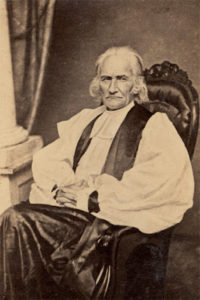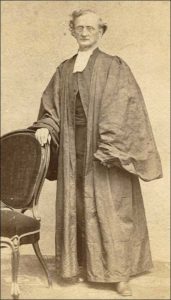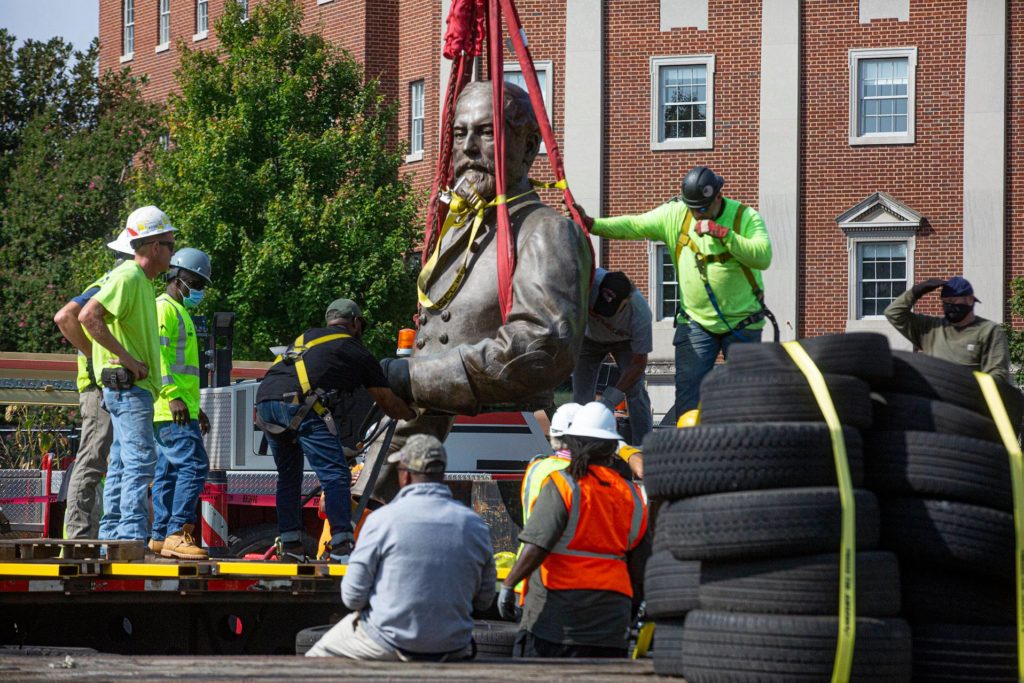The Lee statue on Monument Boulevard in Richmond, Virginia came down today. After it was lifted off its pedestal the 12 foot tall statue of the general who led the Confederacy was cut into pieces for transport. The pedestal on which is etched Lee remains for now. The spray-painting on the pedestal from the Black Lives Matter protests has not been removed.
Robert E. Lee was an Episcopalian. He had an especially close relationship with the bishop of Virginia, the Rt. Rev. William Meade during the war. It is said Lee made it a priority to visit Meade in the bishop’s dying days:

“God bless you! God bless you, Robert!” he faltered out, ” and fit you for your high and responsible duties. I can’t call you’ general’-I must call you’ Robert;’ I have heard you your catechism too often.”
General Lee pressed the feeble hand, and tears rolled down his cheeks. “Yes, bishop-very often,” he said, in reply to the last words uttered by the bishop.
…
Much exhausted, and laboring under deep emotion, Bishop Meade shook the general by the hand, and said: “Heaven bless you! Heaven bless you! and give you wisdom for your important and arduous duties!”
These were the last words uttered during the interview. General Lee pressed the dying man’s hand, released it, stood for several minutes by the bedside motionless and in perfect silence, and then went out of the room.
On the next morning Bishop Meade expired.

When in Richmond, Lee attended St. Paul’s Episcopal which came to be known as the Cathedral of the Confederacy. Its rector, the Rev. Charles Minnigerode was known as the Pastor of the Confederacy. Like many Virginia Episcopal clergy he held humans in bondage (1850 Slave Schedule, 1860 Slave Schedule). A Lutheran immigrant, it is said he introduced the Christmas tree in the U.S.
A document written for children in the Lee Family Archive says Minnigerode played a prominent role at the unveiling of the statue on May 29, 1890:
Ringing cheers arose, not once, but time and time again, as the great men took their places on the stand, and it was as late as 3:45 o’clock P.M. when Governor McKinney stepped forward to make the opening speech.
Then there was prayer by Rev. Dr. Minnigerode, who was rector of St. Paul’s church during the war, at which church General Lee worshiped when in Richmond.
When the prayer ended, the band played Dixie, the war-song of the South, with whose strains the old soldiers had so often been thrilled as they marched into battle. Then there was a great noise which at last wore itself away….,
There is a story about a black man taking his place at the communion rail of St. Paul’s after the war. Lee is said to be present. There are two competing versions of the story but they agree that Lee then took a place at the communion rail. In one version, Lee’s action is an act of reconciliation, that he would join a black man at the same communion rail. In the other version, Lee takes a place at the communion at a distance from the man in order to insinuate you don’t belong here. In neither version is Lee given a chance to express his intent. For alternative views on the story see here and here.

